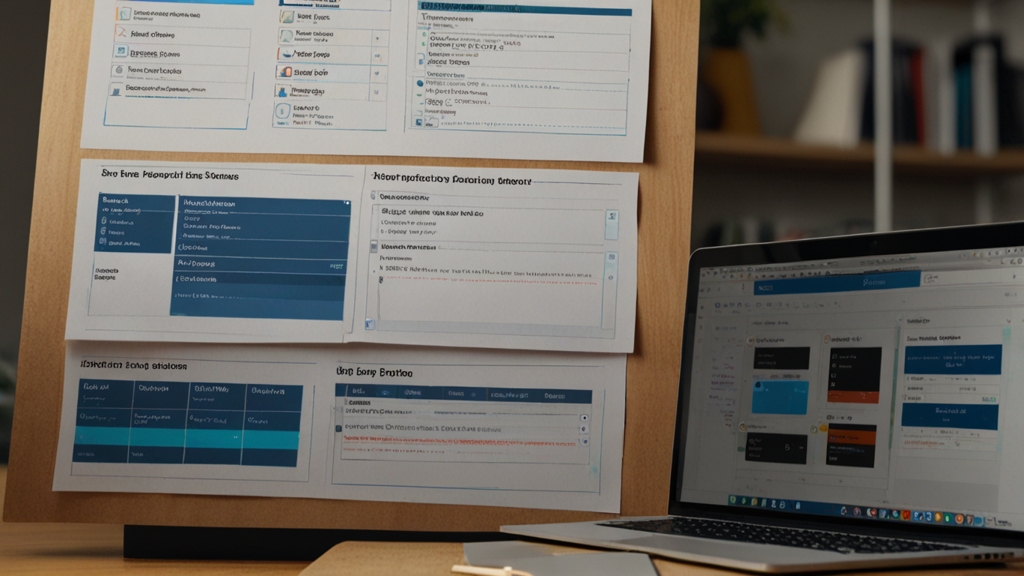Transform Your Workflow: Front-End Frameworks that Increase Productivity
In the fast-paced world of web development, an efficient workflow can be the difference between projects running smoothly or falling into chaos. One of the key elements that can transform your workflow is the choice of front-end framework. These frameworks provide pre-written code and guidelines to help you build responsive and high-performance web applications. Below, we explore some of the most impactful front-end frameworks that can significantly boost your productivity.
1. React
React, developed by Facebook, is one of the most popular front-end frameworks. It allows developers to build reusable components, which can be a massive time-saver. React's component-based structure encourages you to break down your UI into smaller, manageable parts, simplifying both development and maintenance.
"React promotes a design philosophy where UI logic is inherently reusable, leading to a more modular and maintainable codebase." - Jane Doe, Lead Front-End Developer
React also offers a virtual DOM, which ensures minimum updates and maximum performance. Its vast ecosystem, including libraries like Redux for state management, further extends its capability, making it a versatile choice for various projects.
2. Vue.js
Vue.js is another front-end framework that has gained substantial traction due to its simplicity and flexibility. Vue.js blends the best features of Angular and React, providing a gentle learning curve while being extremely powerful for creating dynamic applications.
With its two-way data binding, Vue.js enables real-time updates between the model and the view. Additionally, Vue's CLI (Command-Line Interface) offers a highly organized approach to setting up projects, complete with modern build tools and best practices out-of-the-box.
"Vue.js makes the development process intuitive without sacrificing flexibility or performance. It's perfect for both small and large-scale projects." - John Smith, Full-Stack Developer
3. Angular
Angular, maintained by Google, is a comprehensive front-end framework known for its robustness. Unlike React and Vue, Angular comes as a full-fledged MVC (Model-View-Controller) framework, offering a structured and opinionated approach to web development.
With strong TypeScript support, Angular ensures type safety and better tooling. Its dependency injection, powerful templating engine, and comprehensive documentation make it a reliable choice for enterprise-grade applications.
4. Svelte
Svelte is the new kid on the block, offering a radical new approach to front-end frameworks. Unlike traditional frameworks that do most of their work in the browser, Svelte shifts that work into compile time. This means your application starts as a more lightweight, faster executable.
"Svelte is a game-changer. It offers unparalleled performance by compiling your code to vanilla JavaScript, making it incredibly efficient." - Sarah Lee, Front-End Developer
Svelte's syntax is simple and elegant, providing a refreshing alternative to more complex frameworks. As a result, you can achieve more with less code, dramatically simplifying your workflow.
5. Bootstrap
While Bootstrap is often discussed as a CSS framework, its extensive library of pre-styled components makes it invaluable for front-end development. By leveraging Bootstrap, you can quickly prototype and build responsive, mobile-first websites without having to write much custom CSS.
Bootstrap's grid system, built-in components, and utility classes help maintain consistency across your project, which is crucial for efficient collaboration within teams. Furthermore, its active community ensures continuous updates and a wealth of resources for troubleshooting and inspiration.
Conclusion
The right front-end framework can transform your workflow, making your development process faster, more efficient, and less error-prone. Whether you choose React, Vue.js, Angular, Svelte, or Bootstrap depends largely on your project requirements and personal preference. By leveraging these powerful tools, you can streamline your development process and ultimately increase your productivity.
In the evolving landscape of web development, staying abreast of the latest frameworks and incorporating them into your workflow is not just an option, but a necessity. Choose wisely, and watch your productivity soar.










